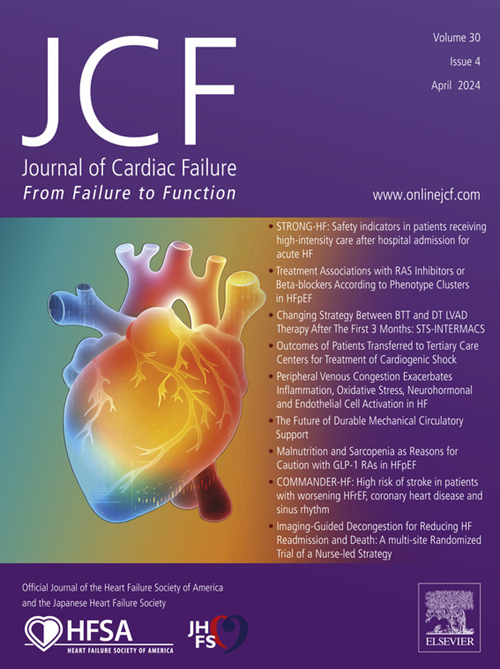Reevaluating How We View Renal Dysfunction During Left Ventricular Assist Device Consideration
IF 6.7
2区 医学
Q1 CARDIAC & CARDIOVASCULAR SYSTEMS
引用次数: 0
Abstract
Introduction
Renal dysfunction is often seen in patients with advanced heart failure and is the cause of exclusion from LVAD implantation for many. As technology advances, such as with the continuous-flow design of the HeartMate3 (HM3), we must reevaluate how we view comorbidities like renal disease when considering patients for LVADs. We aimed to review patients implanted with an HM3 and examine their survival through the lens of their eGFR to determine if those with a lower eGFR (≤ 30) or on dialysis at the time of implantation had comparable outcomes to patients with higher eGFR.
Methods
This is a single-center retrospective review of patients at our institution implanted with an HM3 between 1/1/2021 and 7/1/2023. Patients were sorted into groups by eGFR at the time of implantation as follows: Group A (eGFR ≥ 60), Group B (60 > eGFR > 30), and Group C (eGFR ≤ 30 or on dialysis). We evaluated each group's survival at 6, 12, and 24 months and compared their development or redevelopment of a dialysis requirement post-implant with a chi-squared test. At respective survival calculations, we censored patients who were alive but had not reached or had a transplant before an endpoint.
Results
We reviewed a total of 177 patients. Group A consisted of 73 patients (mean age: 49.1, % male: 67.1), Group B of 64 patients (mean age: 56.1, % male: 79.7), and Group C of 40 patients (mean age: 56.5, % male: 77.5). Eleven Group C patients were on dialysis at the time of implantation (1 hemodialysis, 10 CRRT) with three remaining on dialysis indefinitely post-implant. The median length of dialysis requirement for these eleven patients after LVAD implantation was 33 days. Group C patients had a seemingly lower 6-month survival rate; however, they had a similar 12 and 24-month survival compared to higher eGFR groups (Figure, Table). The percentage of patients who developed or redeveloped a dialysis requirement in each group was 12.3%, 12.5%, and 18.9%, respectively (p=0.59).
Conclusion
This study demonstrated that an eGFR ≤ 30 or being on dialysis at implantation is likely insufficient to predict a poor outcome post-LVAD in those implanted with an HM3. Additional investigation is needed to improve how we evaluate patients with renal disease for LVADs to provide better access to lifesaving implantations in a population with a common comorbid condition.
求助全文
约1分钟内获得全文
求助全文
来源期刊

Journal of Cardiac Failure
医学-心血管系统
CiteScore
7.80
自引率
8.30%
发文量
653
审稿时长
21 days
期刊介绍:
Journal of Cardiac Failure publishes original, peer-reviewed communications of scientific excellence and review articles on clinical research, basic human studies, animal studies, and bench research with potential clinical applications to heart failure - pathogenesis, etiology, epidemiology, pathophysiological mechanisms, assessment, prevention, and treatment.
 求助内容:
求助内容: 应助结果提醒方式:
应助结果提醒方式:


